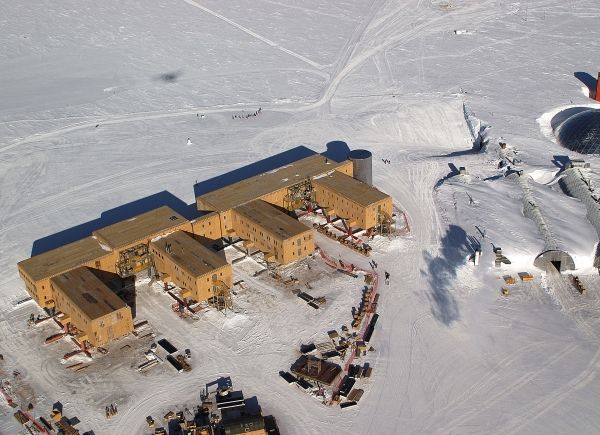The South Pole has warmed at a rate three times the global average over the last three decades, according to a new study in the journal Nature Climate Change. Temperatures at the Amundsen-Scott research station in Antarctica rose by 1.8 degrees Celsius between 1989 and 2018. For comparison, global temperatures rose a total 0.5 to 0.6 degrees C during the same 30-year period.
The research, led by scientists at Victoria University of Wellington in New Zealand, determined the warming at the South Pole, a rate of 0.61 degree C per decade, was driven by both natural climate variability — warm ocean temperatures in the western tropical Pacific Ocean — and anthropogenic warming driven by rising greenhouse gas emissions.
“Research over the past couple decades revealed the Antarctic plateau, the coldest and one of the most remote places on Earth, had been cooling while global temperatures were increasing,” Kyle Clem, a polar scientist and lead author of the new study, told Carbon Brief. “Our study has found that this is no longer the case. The South Pole is now one of the fastest warming regions on the planet, warming at an incredible three times faster than the global average rate.”
Read more at Yale Environment 360
Image: Amundsen–Scott South Pole Station. Credit: Bill Henriksen, National Science Foundation


